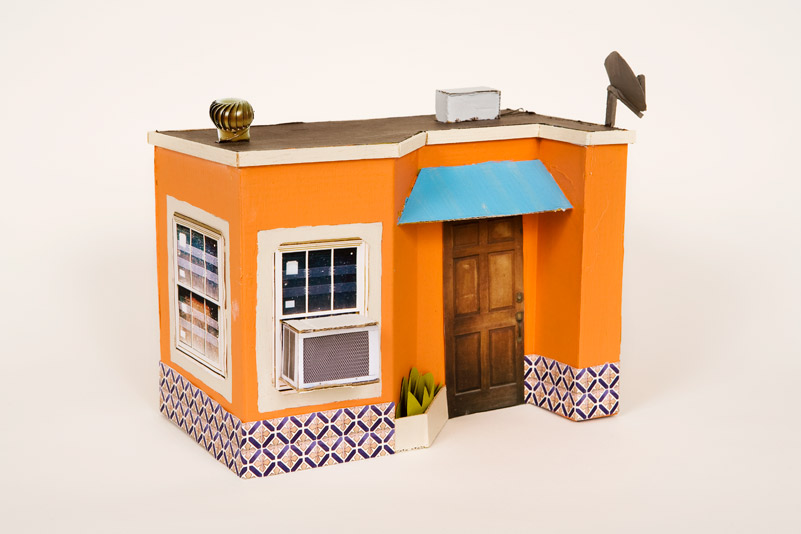The House on Mango Street, published in 1984, is a pillar of Chicago literature, and is based on Sandra Cisneros’s experiences growing up in Humboldt Park—yet few realize the accomplished author is also a fervent collector of contemporary Latino art. A new exhibition, featuring 55 artists who interpreted the novel’s themes of community and class, opening on April 17 at the National Museum of Mexican Art, was an opportunity to catch up with Cisneros and discuss her personal relationship to the visual arts.
How were you exposed to the art world?
Growing up in Chicago was special because all the museums were free on Sunday. My mother used to take us [Cisneros has six brothers]. We’d run around the Field Museum looking at mummies. I pretended the museums were my house, and that all of Grant Park was my garden. At the Art Institute, we saw the van Goghs and Seurat, and the colors of those paintings come up in my novels. We absorbed so much.
Today the museums are free only during the workday, when working class people are at work! I hope the philanthropists [who funded the free Sundays] realize how much they changed my life. If all the museums were free now, imagine how many artists they would be nurturing. I would not be the writer I am without having visited Chicago’s museums on those free days and the public libraries.
How did you become an art collector?
That’s actually the title of a chapter in my new book, A House of My Own, called “Tenemos Layaway, or How I Became an Art Collector.” I had just left Chicago and relocated to Provincetown. I was 28 years old, and usually I didn’t have $75 to spend on art, but I had it from a recent NEA grant, and I saw a woodcut by Tina Dicky called Woman and the Moon. The woodcut reminded me of Mexican art, so I bought it. It’s still one of my favorite pieces.
Has your art collection grown since then?
Yes, but when I recently moved away from San Antonio [where she lived for 20 years], I decided to keep only the small pieces. I had to let the big paintings go. I found homes for them [as donations], at the National Museum of Mexican Art in Chicago, some for the Museum of Latin American Art in Long Beach, some went to the San Antonio Museum of Art.
How do you find new art to buy for your collection?
I try to help my friends out by buying something from them. Artists are generally broke, so I like to help. In Mexico, where I live now, art isn’t something that is simply made by artists. It is part of everyday life. Art is not in a museum; it’s in the marketplace. Everyone has the opportunity to be an artist. I would even say that everyone in Mexico is an artist. Life is very intense there—intensely beautiful and intensely savage.
Do you also make art?
I made an altar to my mother. It’s on view at the Smithsonian through the summer, in the same gallery as Dorothy’s red slippers! But also, when I’m stuck with my writing I take out my watercolors and my pencil, and I draw.



